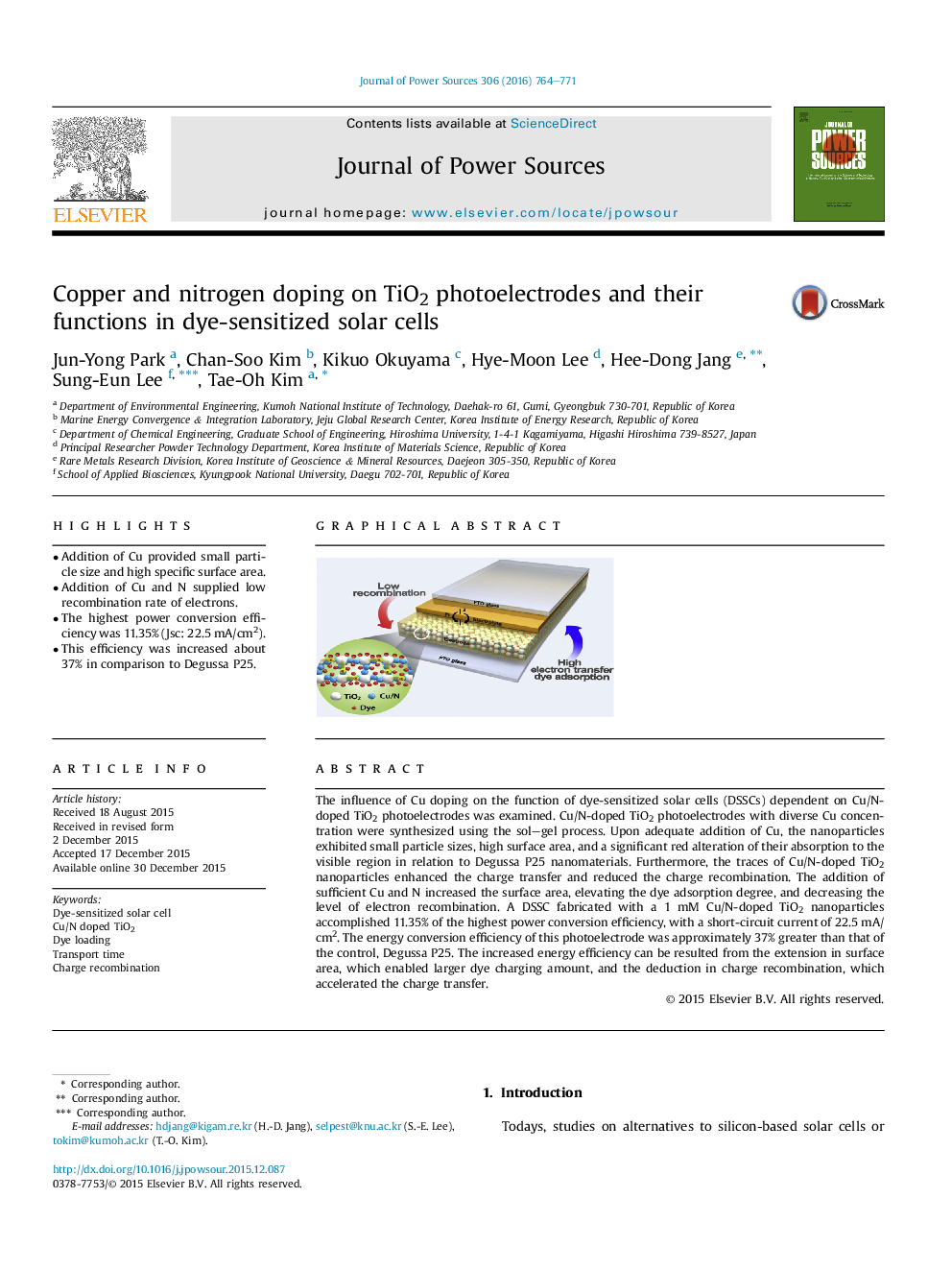| کد مقاله | کد نشریه | سال انتشار | مقاله انگلیسی | نسخه تمام متن |
|---|---|---|---|---|
| 1292410 | 1497926 | 2016 | 8 صفحه PDF | دانلود رایگان |

• Addition of Cu provided small particle size and high specific surface area.
• Addition of Cu and N supplied low recombination rate of electrons.
• The highest power conversion efficiency was 11.35% (Jsc: 22.5 mA/cm2).
• This efficiency was increased about 37% in comparison to Degussa P25.
The influence of Cu doping on the function of dye-sensitized solar cells (DSSCs) dependent on Cu/N-doped TiO2 photoelectrodes was examined. Cu/N-doped TiO2 photoelectrodes with diverse Cu concentration were synthesized using the sol–gel process. Upon adequate addition of Cu, the nanoparticles exhibited small particle sizes, high surface area, and a significant red alteration of their absorption to the visible region in relation to Degussa P25 nanomaterials. Furthermore, the traces of Cu/N-doped TiO2 nanoparticles enhanced the charge transfer and reduced the charge recombination. The addition of sufficient Cu and N increased the surface area, elevating the dye adsorption degree, and decreasing the level of electron recombination. A DSSC fabricated with a 1 mM Cu/N-doped TiO2 nanoparticles accomplished 11.35% of the highest power conversion efficiency, with a short-circuit current of 22.5 mA/cm2. The energy conversion efficiency of this photoelectrode was approximately 37% greater than that of the control, Degussa P25. The increased energy efficiency can be resulted from the extension in surface area, which enabled larger dye charging amount, and the deduction in charge recombination, which accelerated the charge transfer.
Schematic diagram of the DSSC assembled with a Cu/N-doped TiO2 photoelectrode.Figure optionsDownload as PowerPoint slide
Journal: Journal of Power Sources - Volume 306, 29 February 2016, Pages 764–771